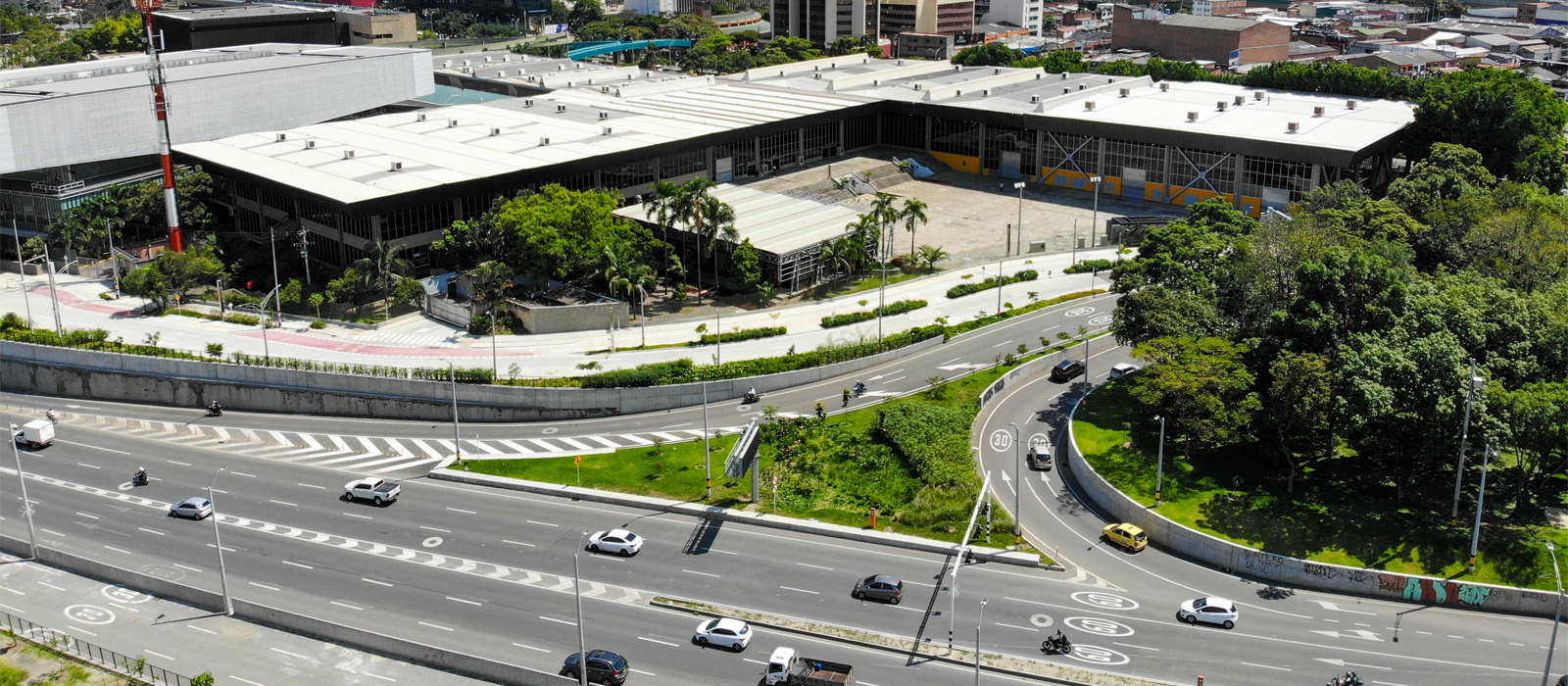Colombia-MICE is part of the Pelecanus Travel Group. We are located in Bogota, Colombia. We are specialized in corporate travel and all services around Meetings, Incentives, Conferences, and Exhibitions.
Let’s say you plan to come to Colombia soon for a meeting or a convention. But you don’t know how to get there and how to get around the country once you arrive.
Well, you’ve come to the right place. We’re telling you everything you need to know about transportation in Colombia for business travel. From means of transportation, infrastructure and insider tips, so don’t worry!
Content
What you need to know first about Colombia
Colombia is a big country. With an area of around 1,140,000 sq km, it is in the top 30 largest countries. To give you an idea, it is “slightly less than twice the size of Texas”. (The World Factbook)
But not only that. Colombia is as diverse geographically as it is culturally. You find 2 coasts, remote islands, the Andes mountain range that splits into three, also vast plains, and the lush Amazon rainforest. To get to some destinations, you have to cross mountains – literally.
So, getting around is not necessarily intuitive and there are plenty of ways to choose from.
Air transportation in Colombia
Flying from one Colombian city to another is our recommended option for business travelers. It saves time and provides the most comfortable journey. It costs more –naturally, but it’s worth it.
For short distances, there are alternatives though. And if your team doesn’t mind compromising a bit of time and space, you could choose road transportation.
However, you need to know that the distances between the major cities can be considerable. So if long connections are included in your itinerary, traveling by air wins.
All major cities and towns in Colombia have an airport and some remote towns too, so most of the country is pretty accessible. There are various airlines serving them that range in prices, as well as in quality. To ensure the best price available, book in advance and from the local version of the website. That means you will have to browse in incognito mode and select the local language and currency. We can always help you with the whole process.
Main airports in Colombia
The following information about routes and connections is subjected to changes due to travel restrictions during the pandemic.
Bogotá DC – El Dorado International Airport (BOG)
- International connections: the US, Canada, Argentina, Mexico, Ecuador, Peru, Panama, Brazil, Dominican Republic, El Salvador, Guatemala, Chile, Spain, France, the Netherlands, Turkey
- Domestic flights: 27 connections all around the country
Medellín, Rionegro, Antioquia – José María Córdova International Airport (MDE)
- International connections: the US, Mexico, Peru, Venezuela, Panama, Dominican Republic, Aruba, Spain.
- Domestic flights: 11 connections.
Cali, Palmira, Valle del Cauca – Alfonso Bonilla Aragón International Airport (CLO)
- International connections: the US, Panama, Chile, Peru, Spain.
- Domestic flights: 17 connections.
Cartagena, Bolívar – Rafael Núñez International Airport (CTG)
- International connections: 11 routes to the US, Canada, Mexico, Panama, Peru, the Netherlands.
- Domestic flights: 7 connections.
Other international airports in Colombia
Armenia, La Tebaida, Quindío – El Edén International Airport (AXM)
Barranquilla, Soledad, Atlántico – Ernesto Cortissoz International Airport (BAQ)
Bucaramanga, Lebrija, Santander – Palonegro International Airport (BGA)
Cúcuta, Norte de Santander – Camilo Daza International Airport (CUC)
Leticia, Amazonas – Alfredo Vásquez Cobo International Airport (LET)
Pereira, Risaralda – Matecaña International Airport (PEI)
San Andrés, San Andrés y Providencia – Gustavo Rojas Pinilla International Airport (ADZ)
Santa Marta, Magdalena – Simón Bolívar International Airport (SMR)
Main airlines in Colombia
Avianca: It is the flag carrier of Colombia and has the second-largest fleet in South America.
LATAM: This is the largest airline in Latin America offering 136 destinations all over the world.
EasyFly: It was the first budget regional airline in Colombia and currently has 26 routes.
VivaAir: It is a Colombian budget airline now with 35 routes and functioning also in Peru.
Wingo: It is a Latin American budget airline with 42 routes.
Satena: This is the commercial carrier of the Colombian Air Force. It takes you to the somewhat remote destinations of the country in smaller aircrafts with a reduced frequency. It has around 40 routes.
Current regulations
As of December 23rd, 2020, no PCR test for Covid-19 is required to enter the country. Only filling out the CheckMig form online 24 hours before the flight and presenting the email confirmation is mandatory. For leaving, the regulations depend on the country of destination.
For more information, visit this blog about all requirements and measures to follow when flying to Colombia.
Road transportation in Colombia
One thing Colombia doesn’t stand out is road infrastructure. There are approximately 206,800 km of roadways – 19.300 km of which are primary roads in charge of the nation and only 2,100 km of railways. Hence, the infrastructure lag is evident. However, investment has increased and there have been huge improvements in road safety.
There are several ways to get around the country by road for every need and budget.
Car – Driving in Colombia
Foreigners on a tourist visa can drive in Colombia with a valid license from their home country. It is key to carry a copy of your passport and entry stamp. Also, having a third-party liability vehicle insurance is mandatory.
Note: In Colombia, people drive on the right lane of the road and the steering wheel is on the left side. The maximum speed is on average 60 km/h (37.2 mph) within cities and 80 km/h (49.7 mph) on roads.
The problem here is that the driving culture in the country is chaotic. Traffic rules are vaguely followed and improvisation is common. Collisions and accidents are a daily occurrence. So, extra precaution is advised, especially on inter-city roads because motorbikes, cars, and trucks overtake carelessly. Also, traffic is a problem in every big city. Expect 1 hour minimum to get anywhere in Bogota at peak hours.
On another note, renting a car is more expensive and complicated. You will need to have an international driving permit, acquire insurance, and spend on gas, which is not cheap either. Anyways, there are good cars rental companies such as Avis, Hertz, and Budget.
Motorcycle
The infrastructure for motorcycles is the same for cars. These vehicles are pretty common and also among the most affected in accidents. Motorcyclists tend to go in between cars ignoring basic traffic rules. Be careful with these!
Intercity buses in Colombia
Intercity buses are a great option for shorter distances or trips without time pressure. The pros of traveling by bus in Colombia are the costs and the sights! Passengers will witness shocking landscapes and the variation of the terrain, hence the climate – depending on the points of origin and destination.
Major cities in the country have a bus terminal and are interconnected by different routes. There are also various types of buses: Colectivos, buses, and coaches. The first ones are small vehicles that cover short distances, let’s say from Bogota to surrounding near towns, and depart once full. These can be taken on the roads or at certain points. Buses can cover the same routes but are usually booked at the terminals, just like the coaches, which are more spacious and destined for overnight journeys.
Coaches are the most comfortable ride of the three and the most luxurious bus companies may offer near-flat beds, Wi-Fi, snacks, and entertainment. For long journeys, warm clothes and blankets are especially needed since the A/C gets real. Among the usual stops these buses make are at restaurants and military or police checkpoints.
Some of the famous bus companies are Copetran, Expreso Bolivariano, Expreso Brasilia and Flota La Macarena.
On the RedBus website, you can plan your travel and compare prices.
Bicycle transport in Colombia
Cycling is a major thing in Colombia. Some local sportsmen have made it to the largest tours and competitions. Cycling as a means of transportation is also common, but not on the same level. Colombians are slowly switching to this activity but are sometimes set back by a lack of improved infrastructure and/or safety.
Not that the whole infrastructure is deficient. More exclusive bikeways are being built and security is improving. Bogotá is the city with the most kilometers of bikeways in Latin America! And every Sunday and holiday closes main roads so that bikers, skaters, athletes, and pedestrians use them exclusively. There are also several points for bike rental close to parks. So, using the capital’s bikeways to get to nearby places is a fantastic idea provided that all precautions are taken. An alternative is to participate in the varied bike city tours that the major cities have to offer.
Public transportation in Colombia
Public transportation in Bogotá
The capital has an integrated transport system (SITP) including TransMilenio, one of the largest bus rapid transit systems in the continent. It consists of a network of stations distributed throughout the city with several routes connecting them. Users can access a station with the TuLlave prepaid card recharged at kiosks in the entry. A ticket costs around $2,500 (0,71 USD!) and allows unlimited travel as long as you don’t get out of the station. Note that fares increase each year.
TransMilenio buses are complemented with SITP Urbano which are regular buses that go around neighborhoods and connect with main roads, and with TransMiCable that is a cable car system taking citizens to their homes up in the southern hills of the city – in Ciudad Bolivar district.
You can find information about the routes, schedules, and lines on the Transmilenio y Sitp app.
Public transportation in Medellín
This city stands out for having the most complete and modern transportation system in Colombia. Its integrated system consists of Metro, Metroplús, Tranvía, EnCicla, and the SIT. All of them require the Tarjeta Cívica card and rates for tourists vary between $2,700 to a little more than $4,000 (0.77-1.14 USD) depending on the services-routes used.
The metro of Medellin is 34.5 km long and has 27 stations, there also is a system of cablecars called MetroCable.
Metroplús is the bus rapid transit system and has 3 lines. The tramway has a 4.3 km railroad and is completely electric. The SIT is the urban bus that serve all zones of the city. And, finally, you can benefit from the public bicycle system called EnCicla.
Public transportation in Cali
Another city with an integrated mass transportation system is Cali. It is called MIO and this time is made up of articulated and complimentary buses that cover 93% of the city. This system also requires a prepaid card to access the stations that can be personal or valid for only one ticket.
Public transportation in Cartagena
TransCaribe is the integrated mass transportation system of Cartagena, of the bus rapid transit type and with 15 km in lines. Access is through a card that can be anonymous or customized.
Public transportation in the Coffee Region
Pereira is the largest city in the region and also offers a bus rapid transit system integrated with other types of buses to transport citizens and tourists. It also works with a prepaid card.
The highlight of Manizales is its cable car for public transportation with 2 lines and 4 stations. But there also are regular buses.
Last, in Armenia, there is another integrated system with different routes and vehicles.
The three cities are interconnected by excellent roads, and there are bus terminals. For a little more adventure, take a Willy instead of a bus. Willy Jeeps are pretty common in the coffee region as a means of public transportation. These are always full of passengers or cargo and take the most daring roads.
Public transportation in Yopal
Since it is a smaller and rural city, the means of transportation found in Yopal are common buses and taxis. From the bus terminal, it is possible to make connections to different regions of the country including Bogotá, of course.
In many cities, there are still these old buses that go around neighborhoods and main roads, which don’t belong to the established integrated transportation systems. These are called Busetas and take you for a cheaper rate in cash.
Taxis in Colombia
Taking taxis in Colombia is easy and usually cheap. But be aware that locals may take advantage of tourists and charge them exaggeratedly for a ride. Some will have taximeters and rate charts, some won’t. In cities where taxis don’t use taximeters, usually, there are fixed fares for destinations or distances. And it is common for taxis going to and from the airports to have a fixed fare.
Anyway, a recommendation is to always ask the price of the ride to your destination in advance and bargain when possible. A little Spanish is always useful.
The yellow vehicles can be hailed on the street or called through phone lines or apps such as EasyTaxi. Using an online app is definitely the best way to get one.
Online transportation platforms in Colombia
For more security and reliable fares, you can download one of these ride apps available in Colombia. Be sure to read the terms and conditions before using them to avoid surprises.
Uber: It has been a problematic platform in the country to the point it was considered illegal. For that reason, passengers would always sit on the front seat to look like a normal family car. Now, Uber is back but it works differently. Every time you call an uber you agree to a contract by which you rent a car with a driver and therefore, you are responsible for them until you get to your destination.
Beat: It is a cheaper version of Uber
We know that business travel has specific demands regarding transportation and it gets a bit more complicated. But we can take care of all of your needs for your corporate trip to Colombia.



